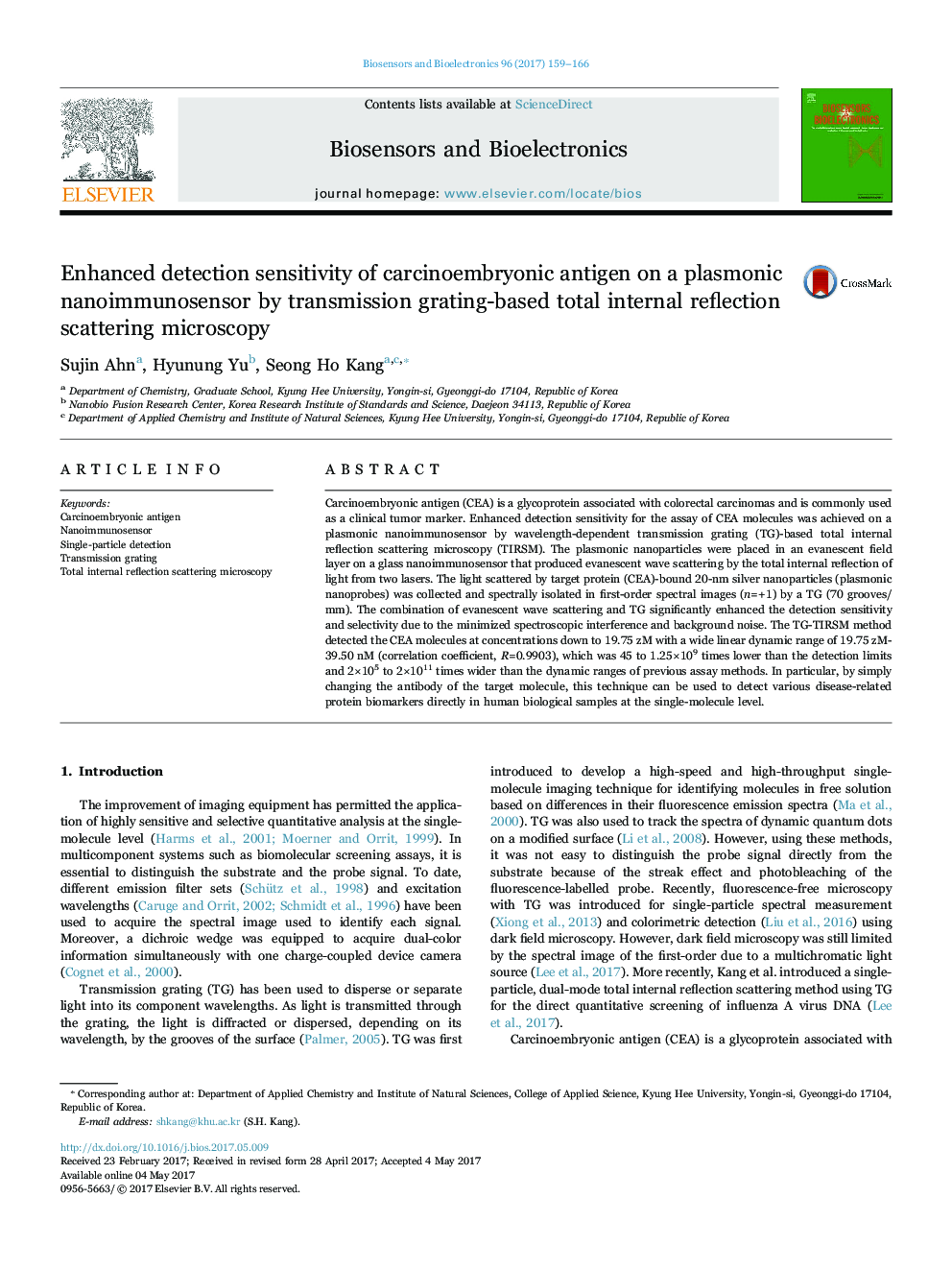| Article ID | Journal | Published Year | Pages | File Type |
|---|---|---|---|---|
| 5030852 | Biosensors and Bioelectronics | 2017 | 8 Pages |
Abstract
Carcinoembryonic antigen (CEA) is a glycoprotein associated with colorectal carcinomas and is commonly used as a clinical tumor marker. Enhanced detection sensitivity for the assay of CEA molecules was achieved on a plasmonic nanoimmunosensor by wavelength-dependent transmission grating (TG)-based total internal reflection scattering microscopy (TIRSM). The plasmonic nanoparticles were placed in an evanescent field layer on a glass nanoimmunosensor that produced evanescent wave scattering by the total internal reflection of light from two lasers. The light scattered by target protein (CEA)-bound 20-nm silver nanoparticles (plasmonic nanoprobes) was collected and spectrally isolated in first-order spectral images (n=+1) by a TG (70 grooves/mm). The combination of evanescent wave scattering and TG âsignificantly enhanced the detection sensitivity and selectivity due to the minimized spectroscopic interference and background noise. The TG-TIRSM method detected the CEA molecules at concentrations down to 19.75Â zM with a wide linear dynamic range of 19.75Â zM-39.50Â nM (correlation coefficient, R=0.9903), which was 45 to 1.25Ã109 times lower than the detection limits and 2Ã105 to 2Ã1011 times wider than the dynamic ranges of previous assay methods. In particular, by simply changing the antibody of the target molecule, this technique can be used to detect various disease-related protein biomarkers directly in human biological samples at the single-molecule level.
Related Topics
Physical Sciences and Engineering
Chemistry
Analytical Chemistry
Authors
Sujin Ahn, Hyunung Yu, Seong Ho Kang,
